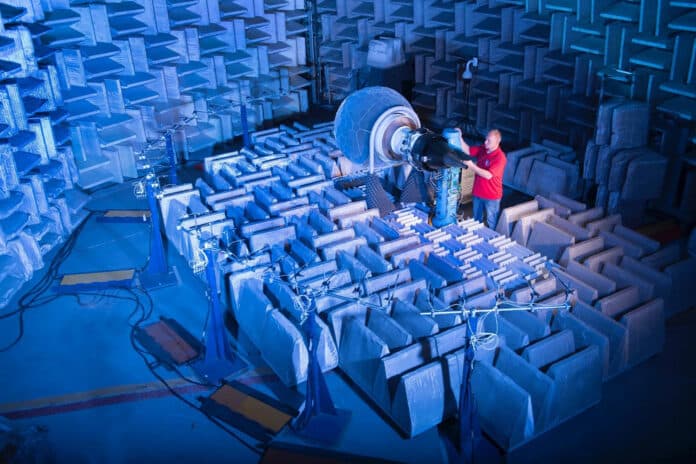Developing a new airplane engine system is undoubtedly a challenging task that requires extensive research and development. There is currently a strong drive in the aviation industry to make air travel more environmentally friendly, and this is where NASA’s experiments using a small-scale, fully-working jet engine come into play. Their work is a significant step towards creating a more sustainable future for air travel.
The small-scale, fully operational jet engine located inside a high-tech NASA laboratory in Cleveland might not catch your eye at first glance, but it represents a significant step in making aviation more sustainable. By testing new engine components on a smaller and less expensive scale, researchers and engineers can try out newly designed engine components less expensively compared to using a more costly full-scale jet engine test rig.
Named DGEN380 Aero-Propulsion Research Turbofan (DART), the engine is tiny enough to fit on a kitchen table, measuring just 4.3 feet long. That’s half the length of engines used on single-aisle airliners. This engine is a game-changer for NASA’s sustainable aviation technology research. Thanks to its accessibility, the DART engine is boosting the agency’s research efforts, and it’s all thanks to a French company named Price Induction (now Akira), which made it.
NASA acquired the DART engine in 2017, and it’s currently a hidden gem located within the Aero-Acoustic Propulsion Laboratory at NASA’s Glenn Research Center in Cleveland.
“DART’s small size makes it appealing,” said Dan Sutliff, who coordinates research for the engine at NASA Glenn. “It’s a great way to explore new technology that hasn’t yet reached the level of a full-scale operation.”
NASA has actively used DART in past research activities related to jet engines. One of the key areas of focus was incorporating materials that could help reduce engine noise, which could be useful in developing quieter airliners.
Now, NASA researchers plan to explore more ideas using the DART engine to develop ultra-efficient airliners that could be used in the future. If successful, the technology could progress to larger facilities such as NASA’s wind tunnels for further testing.
“DART is a critical bridge between a design and a wind tunnel test,” Sutliff said. “Technologies that work well here have a greater chance of achieving successful inclusion on future aircraft engines. The test rig helps NASA save resources and contribute to protecting our environment.”
DART’s high bypass ratio makes it more fuel-efficient than other jet engines. This feature makes DART the perfect engine for testing new propulsion methods and aiding NASA’s efforts in developing a small-core, fuel-efficient jet engine for commercial airliners in the 2030s. Additionally, DART can test various aspects of a jet engine, including engine noise, operating controls, coatings used to protect engine parts, sensors, and other instrumentation. With DART, you can enjoy a more cost-effective and environmentally friendly air travel experience.
Furthermore, the engine can test many other aspects of a jet engine, such as engine noise, operating controls, coatings used to protect engine parts, sensors, and other instrumentation.
